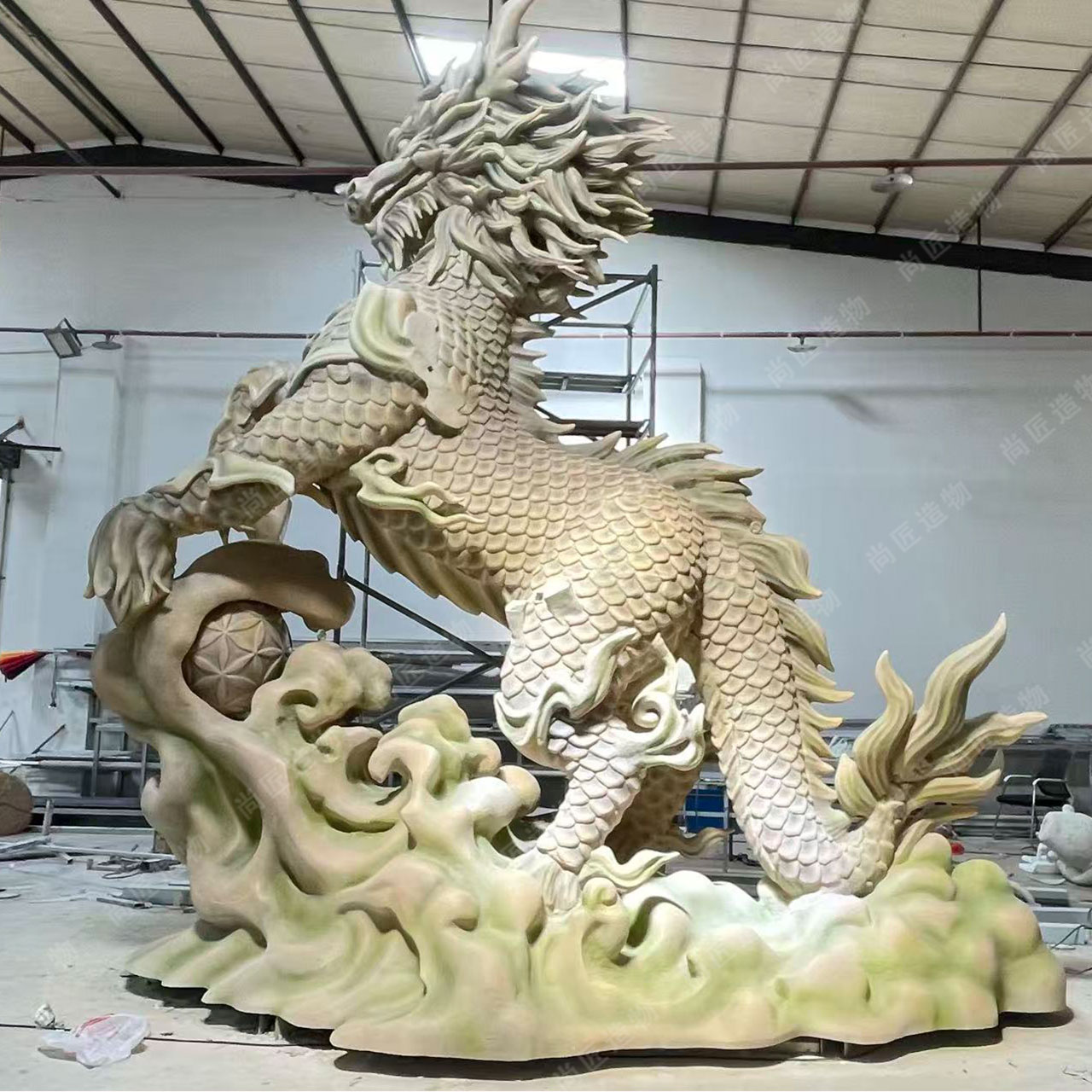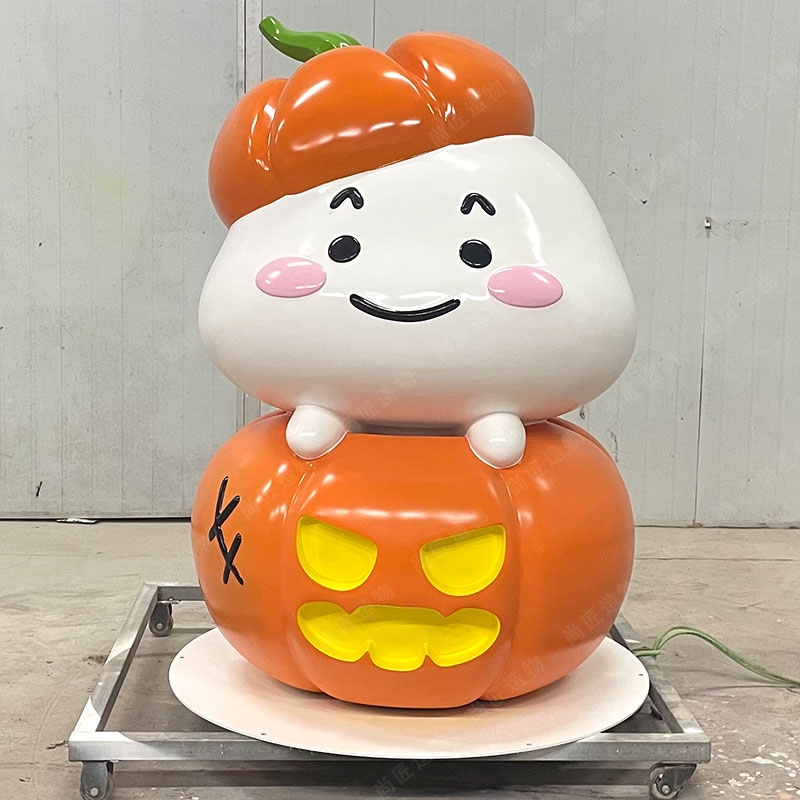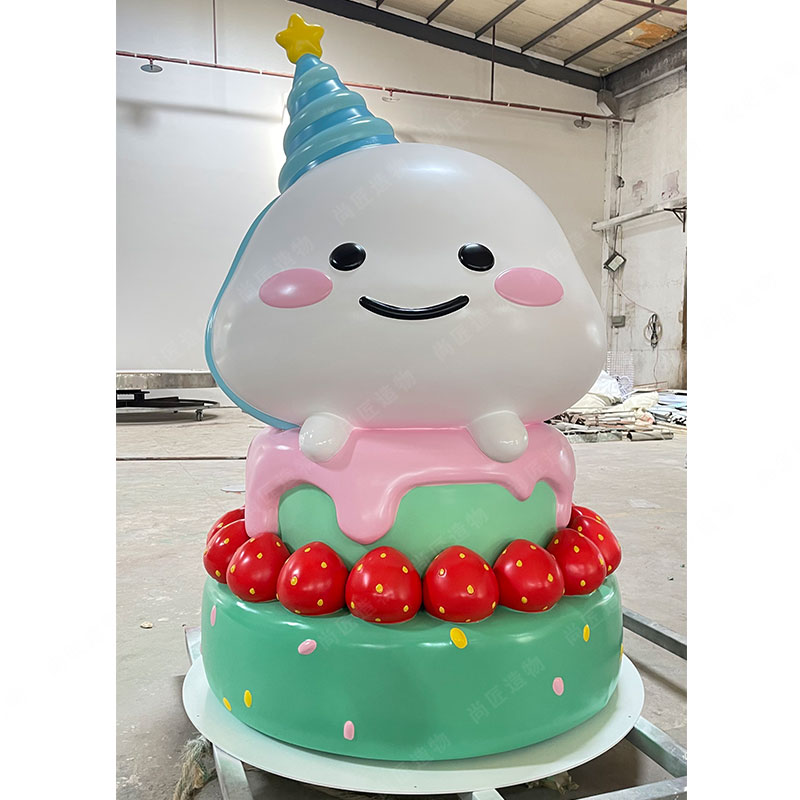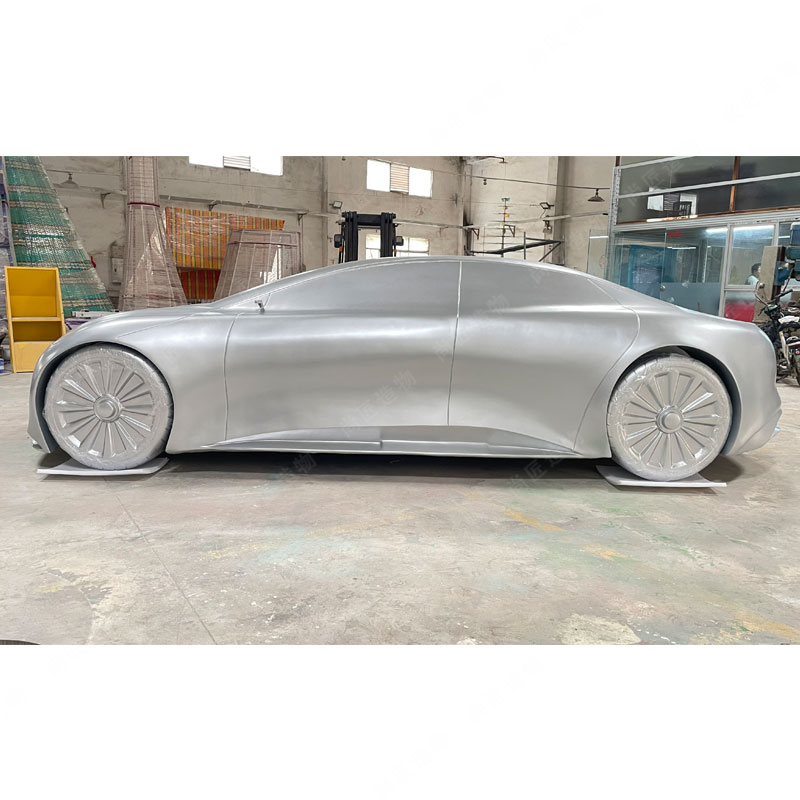In comparing fiberglass sculptures and polished steel statues, several key factors stand out. Fiberglass offers superior durability due to its resistance to corrosion and lower maintenance needs, making it an ideal choice for outdoor installations. The lighter nature of fiberglass also allows for greater design flexibility, enabling artists to experiment with intricate shapes and forms. In terms of cost-effectiveness, fiberglass typically requires a lower initial investment and less energy for transportation and installation. Conversely, polished steel provides a striking visual impact with its reflective surfaces, creating stunning spectacles when illuminated. Ultimately, the choice between these materials will depend on the artist's goals and the specific environmental context in which the sculpture will be displayed. Understanding these distinctions helps artists make informed decisions that align with their artistic vision while ensuring the longevity of their work.
The Durability of Fiberglass Sculpture versus Polished Steel Statues
When comparing durability, fiberglass sculptures often outperform polished steel statues in various aspects. Fiberglass is inherently resistant to rust and corrosion, making it suitable for outdoor installations that may be exposed to harsh weather conditions. In contrast, polished steel can quickly develop rust spots if not properly maintained. Additionally, fiberglass is lighter than steel, which can reduce overall stress on the supporting structures. This weight advantage can lead to added longevity since the material experiences less strain and wear over time. Moreover, fiberglass can be engineered with a high level of impact resistance, allowing it to withstand accidental bumps or falls better than polished steel. Overall, artists and builders may find that fiberglass sculptures provide a more durable option for creative expressions while reducing maintenance requirements.
For more inspiration on sculptural durability and innovative designs, check out this IP character sculpture.

Understanding the Weight Differences Between Fiberglass and Steel Art
When comparing fiberglass and polished steel in sculpture, one key factor to consider is weight. Fiberglass sculptures are notably lighter than those made from polished steel. This difference in weight can significantly affect the installation process and the overall design aesthetics. For instance, a large fiberglass statue can be manipulated easily, offering more options for unique placements without the need for extensive support structures. In contrast, the heavier nature of polished steel requires careful planning to ensure stability and safety during transportation and installation.
To illustrate this difference, consider the following table showing typical weight comparisons for similar-sized sculptures:
| Material | Average Weight per Cubic Foot | Example (8' Tall Sculpture) |
|---|---|---|
| Fiberglass | 30 lbs | Approximately 480 lbs |
| Polished Steel | 490 lbs | Approximately 3,920 lbs |
This disparity not only impacts logistics but also influences energy consumption during transport. Understanding these weight differences is crucial for artists looking to express their creative vision while ensuring practical implementation of their artworks.

Design Flexibility: Fiberglass Sculptures Compared to Polished Steel Statues
Fiberglass sculptures offer significant design flexibility when compared to polished steel statues. With fiberglass, artists can easily create intricate shapes and detailed textures that may be more challenging to achieve with steel. This material can be molded into various forms, allowing for a greater range of creative expression. Additionally, fiberglass is lighter, making large installations easier to construct and maneuver. As David Hockney once said, "
I find that the more detail you put into a work, the more you reveal about the subject." This idea holds true for fiberglass designs that can encapsulate finer details without compromising structural integrity. In contrast, polished steel requires more elaborate engineering considerations due to its weight and rigidity. Overall, the adaptability of fiberglass opens up numerous possibilities for artists looking to push the boundaries of their work. For those interested in exploring different materials in sculpture creation, consider checking out Stainless steel sculptureoptions as another facet of artistic expression.
Cost-Effectiveness of Fiberglass Sculpture Over Polished Steel Statues
When considering the cost-effectiveness of fiberglass sculptures compared to polished steel statues, fiberglass often emerges as the more budget-friendly option. The initial investment in materials for fiberglass is typically lower, and its lightweight nature reduces transportation and installation costs. Additionally, fiberglass sculptures can be produced with less energy and labor, further driving down overall expenses. Unlike polished steel, which may require extensive welding and finishing work, fiberglass allows for quicker fabrication processes. Moreover, the long-term maintenance costs for fiberglass are generally lower since it is less prone to rust and corrosion, eliminating the need for frequent repairs or repainting. Therefore, when evaluating a project's budget alongside artistic goals, fiberglass stands out as a practical choice that balances affordability with aesthetic potential. For more detailed information on this material, check out this Fiberglass sculpture.

Artistic Expression: Choosing the Right Material for Your Sculpture
When it comes to artistic expression, the choice of material plays a crucial role in the effectiveness of a sculpture. Fiberglass and polished steel offer unique properties that influence not only the design but also how the sculpture interacts with its environment. Fiberglass sculptures are known for their versatility in design, allowing artists to create intricate shapes and forms that might be difficult to achieve with steel. This flexibility opens up a world of creative possibilities, offering artists the chance to explore complex designs without compromising structural integrity. On the other hand, polished steel statues provide a striking visual impact with their reflective surfaces, capturing light in ways that enhance their aesthetic value. In selecting between these materials, it is essential for artists to consider how each might contribute to their overall vision while ensuring that it aligns with the demands of durability and maintenance required for outdoor installations. The decision ultimately shapes not only the look but also the enduring nature of their artistic expression.

Maintenance and Longevity: Fiberglass vs. Polished Steel
When considering maintenance, fiberglass sculptures typically require less frequent upkeep than polished steel statues. Fiberglass is resistant to corrosion and can withstand various environmental conditions, including moisture and UV exposure, which helps maintain its color and finish over time. On the other hand, polished steel statues are prone to rusting without proper treatment. Regular maintenance, such as applying sealants or paint, is essential to protect the metal from the elements. Additionally, scratches or dents on steel may require professional repair to restore its surface. The longevity of fiberglass often surpasses that of polished steel due to its inherent properties and lower susceptibility to deterioration. As a result, artists might find fiberglass a more durable option for outdoor displays that endure harsh weather conditions while reducing long-term maintenance efforts.
Environmental Factors Affecting Fiberglass and Polished Steel Sculptures
Environmental factors play a crucial role in the longevity and performance of both fiberglass sculptures and polished steel statues. Fiberglass is less affected by moisture and does not rust, making it an ideal choice for outdoor installations in humid or rainy climates. It maintains its vibrant colors longer than steel, which may fade or corrode if not properly treated. On the other hand, polished steel sculptures are susceptible to rusting when exposed to harsh weather conditions, necessitating regular maintenance to keep their appearance intact. However, when adequately coated or treated, polished steel can endure various environmental stresses. Temperature fluctuations also impact both materials differently; fiberglass remains stable, while steel may expand and contract, affecting structural integrity. Ultimately, understanding these environmental factors can help artists make informed choices about which material best suits their artistic vision and the intended installation location.
Aesthetic Appeal: The Visual Impact of Fiberglass vs. Steel Sculptures
When it comes to visual appeal, both fiberglass and polished steel sculptures have their own unique qualities. Fiberglass offers a wide range of possibilities in terms of color and finish. Artists can easily create vibrant and intricate designs, allowing for greater expression in their work. The lightweight nature of fiberglass also means sculptures can be more playful and dynamic, often featuring complex forms that catch the eye. In contrast, polished steel exudes a sleek, modern elegance. Its reflective surface can create stunning visual effects as it interacts with light and shadows. Steel sculptures also tend to carry a sense of permanence and strength, often becoming iconic landmarks in their surroundings. While both materials have distinct aesthetic attributes, the choice often depends on the intended message an artist wants to convey through their sculpture.
Conclusion
Ultimately, the choice between fiberglass sculptures and polished steel statues hinges on various factors, including durability, weight, design flexibility, cost-effectiveness, and environmental considerations. While fiberglass proves advantageous in many areas—offering resilience against elements, lower maintenance costs, and creative design opportunities—polished steel delivers striking visual effects and a sense of permanence. Artists must carefully assess their specific needs and the context of their work when selecting materials. By understanding the distinct properties of each option, creators can achieve the artistic expression they envision while ensuring the longevity and appeal of their sculptures in diverse environments.
FAQs
What are the maintenance requirements for fiberglass sculptures compared to polished steel statues?
Fiberglass sculptures usually require minimal maintenance due to their resistance to corrosion and weather deterioration. In contrast, polished steel statues need regular upkeep to prevent rusting and may require repainting or protective coating.
How do fiberglass and polished steel sculptures compare in terms of installation?
Fiberglass sculptures are lighter, making installation easier and often less costly. Polished steel, being heavier, requires more careful planning for safe transportation and secure installation.
Can fiberglass sculptures withstand harsh weather better than polished steel statues?
Yes, fiberglass is not prone to rust and can endure various environmental conditions, whereas polished steel is susceptible to rust and may degrade without proper care in harsh environments.
What types of designs can be achieved with fiberglass compared to polished steel?
Fiberglass allows for more intricate shapes and creative designs due to its moldability. Polished steel typically requires more engineering effort for complex forms because of its rigidity.
 ch
ch English
English






